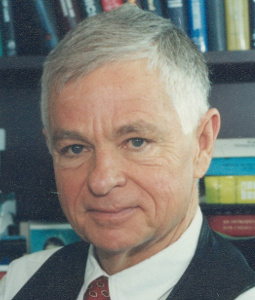Overview
The Center for Electrochemical Engineering at the University of South Carolina was created with the broad vision to spearhead the theory and practice of electrochemical engineering, electrochemical power sources, electroplating and corrosion protection through research and education. The center’s work has profound impact on energy-storage materials used in advanced batteries and developing catalyst for fuel cells. Center research areas also include electroplating, sensors, electrolyzers, corrosion protection, developing highly corrosion-stable alloys for metallurgy, materials for cathodes and anodes for primary and secondary batteries, capacitors and development of performance models.
Researchers affiliated with the Center for Electrochemical Engineering are globally recognized in developing nanostructured composite materials that are applicable in the next generation of batteries, super capacitors and fuel cell assemblies. With increasing miniaturization of electronic devices, a focus is on developing portable energy sources that can power these devices. To this purpose, several nanostructured composites based on transition metals and noble metals loaded on powders have been developed using electroless and pulse plating techniques. Center research has improved the control the metal, alloy or composite microstructure and morphology, thus yielding superior electrocatalytic properties of the composite materials.
Research Highlights
Advances in Polymer Electrode Membrane (PEM) fuel cells are accelerating the commercialization of electric vehicles. Center research includes the synthesis of PEM fuel cell catalysts and catalyst supports. These include, for example, Carbon Composite Catalyst Support (CCCS) synthesized through metal-catalyzed pyrolysis and Co-doped Pt/CCCS using in-house developed protective-coating/annealing processes. Materials synthesis for carbon-based support includes surface modification on the carbon through the introduction of oxygen and nitrogen groups on the surface. Metal-catalyzed pyrolysis increases the carbon graphitization degree in the presence of cobalt at high temperatures (800~900 °C), introduces Co in the carbon matrix and introduces nonmetallic active sites on the carbon surface. Subsequent chemical leaching removes excess of metal used to dope the support.
Tremendous potential exists for the growth of metal finishing industries through the development of processes that are either environmentally friendly or are applicable at the nanoscale. Theoretical and experimental studies are performed here to achieve such coatings. Nanostructured alloys and innovative composite materials have been developed through adaptation of existing bath chemistries. Techniques developed in our laboratories include under potential deposition (UPD) of monoatomic metal layers, autocatalytic reduction and potentiostatic pulse (PP) and pulse reversal (PR) plating of layers of amorphous and crystalline nanostructured alloys. Further refinement of the coating process was achieved through the development of first-principles based theoretical models. The center has also developed a novel process based on electrocatalytic silicate deposition from PQ solution for protection of metal substrates. This process is developed as an alternative for the conventional chrome passivation technique. The method is based on thin silicate layer formation with the help of a novel electrocatalytic process.
Conventional battery systems (Lead acid, Ni-Zn, Ni-Fe, and Ni-Cd) do not address important issues needed for electronic appliances such as long life, low weight, the use of nontoxic materials and high power. In the last decade focus has shifted to a new class of cells such as lithium ion and nickel metal hydride batteries. Our battery materials laboratory is set up to synthesize different chemicals, which can be used as battery electrodes for Li-ion cells and Ni-MH batteries. Further, the facility has capacity to study the charge-discharge behavior, utilization and capacity fade of different batteries and supercapacitors. We also have the capability to mechanical dissect the batteries and perform diagnostic tests to determine the capacity fade and the cause of failure of primary or secondary batteries.
The center is at the forefront of corrosion research. Center facilities provide the capability to address a range of problems, from developing novel inhibitors for reinforced concrete corrosion in transportation infrastructure to environmentally benign coatings for the protection of steel from corrosion in naval ships. One focus of our research is on inhibitors, which are inorganic and organic materials that are used to reduce the rate of the corrosion reaction. The goal is to form a protective film on the surface of the rebar, which will protect the steel from any chloride attack. A second focus is hydrogen permeation in metals. Apart from studying the hydrogen transport rate through coatings, the center can also study mechanical properties of alloys with an ASTM G129 and NACE TM0197 SSR compliant Constant Extension Rate Test System.
People
The Center for Electrochemical Engineering is directed by Branko Popov, Carolina Distinguished Professor in Chemical Engineering. He is internationally recognized for his research in electrochemical and corrosion engineering. Dr. Popov leads a team of researchers and graduate students associated with the center.
-

Branko Popov
Director
-

Ralph White
Core Faculty
-

James Ritter
Core Faculty
-

Michael Matthews
Core Faculty